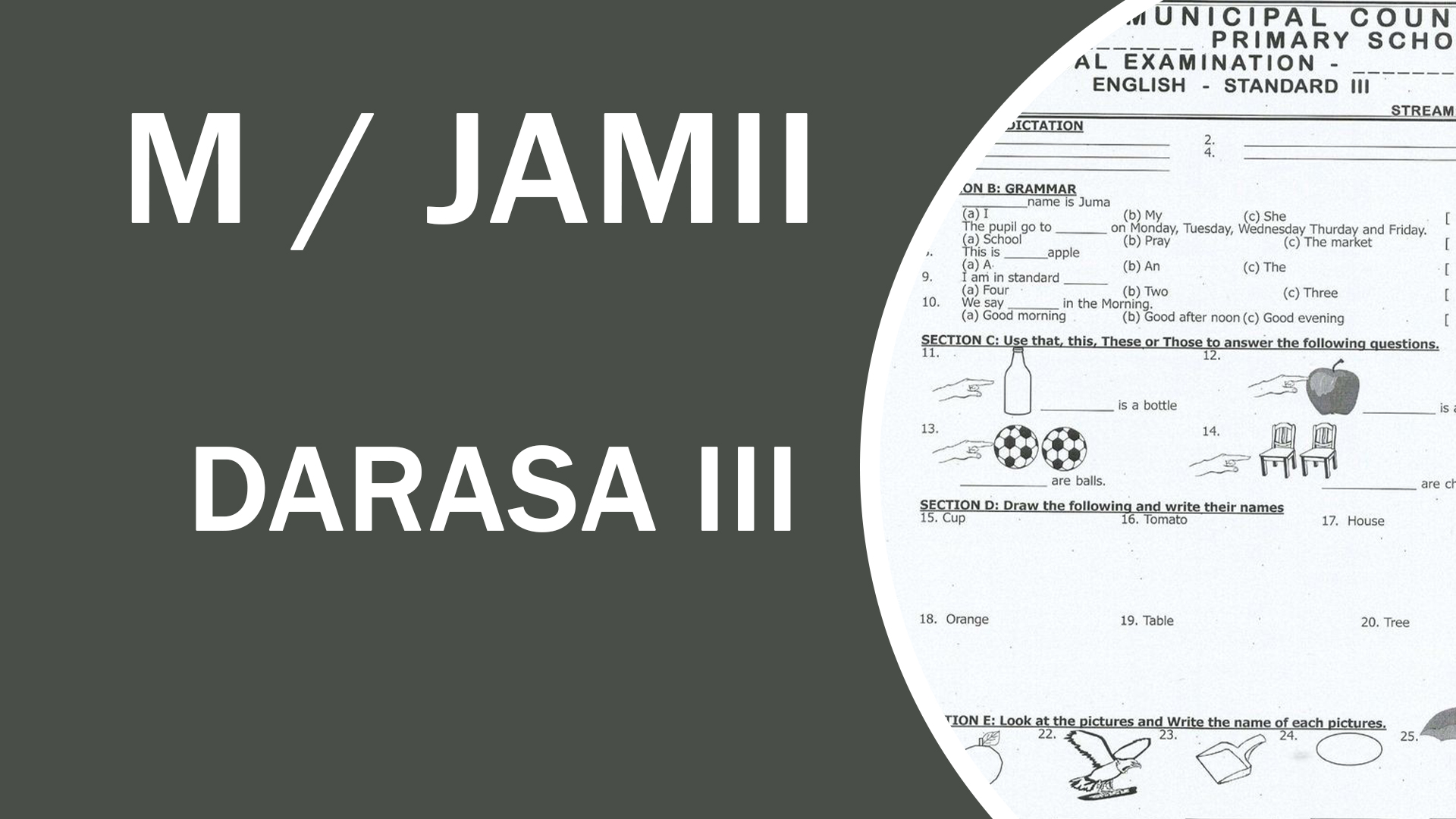Here are some suggested outcomes for the "Jamii" (Class III) course on your Edukea website:
M/ Jamii Class III Outcomes
By the end of this course, students should be able to:
-
Understand the Concept of a Community:
-
Define what a community is and explain the differences between various types of communities (rural, urban, and suburban).
-
Identify the characteristics that make a community thrive (e.g., cooperation, respect, shared resources).
-
-
Recognize the Roles and Responsibilities of Community Members:
-
Identify and describe the different roles people play in a community (e.g., teachers, doctors, farmers, local leaders, and neighbors).
-
Understand how each role contributes to the well-being and development of the community.
-
-
Explore Cultural and Social Practices:
-
Recognize how cultural practices, traditions, and values shape a community's way of life.
-
Identify key social practices and traditions that help bring people together and maintain harmony.
-
-
Appreciate the Importance of Cooperation and Respect:
-
Understand the concept of cooperation and how it is essential for a community to function effectively.
-
Emphasize the importance of respect for others’ differences and the role of social harmony in maintaining peace.
-
-
Recognize the Importance of Community Helpers:
-
Understand the significance of community helpers such as teachers, doctors, policemen, and farmers.
-
Demonstrate an appreciation for these roles by explaining how they help solve community challenges.
-
-
Engage in Responsible Citizenship:
-
Develop a sense of social responsibility and understand how personal actions can affect the community.
-
Express how they can contribute positively to their community by performing simple tasks like helping neighbors or participating in group activities.
-
-
Apply Learnings to Real-World Observations:
-
Connect classroom knowledge with real-world examples by observing and discussing their own community and how it works.
-
Participate in simple projects or activities to help improve their immediate environment (e.g., community clean-ups, helping a neighbor).
-
-
Demonstrate Effective Communication and Collaboration:
-
Work with peers to share ideas, solve problems, and create group presentations or projects about community roles and responsibilities.
-
Practice expressing thoughts clearly in both spoken and written formats, demonstrating the ability to communicate ideas about community effectively.
-
These outcomes ensure that students not only learn about their community but also develop the skills and understanding necessary to become active, responsible members of society.
Let me know if you would like to adjust or expand on any of these outcomes!
For your "Jamii" (Class III) course on the Edukea website, here are some suggested requirements that could be included in your video content:
M/ Jamii Class III Requirements
To ensure that students are fully equipped to engage with the content and gain the most from the course, the following requirements are recommended:
-
Basic Understanding of Social Studies:
-
Students should have a foundational knowledge of their environment, as this course builds on their previous learning about families, cultures, and basic community concepts.
-
-
Access to a Device:
-
A tablet, computer, or smartphone with internet access to watch videos and interact with additional learning resources (quizzes, worksheets, discussion boards).
-
-
Notebook and Writing Materials:
-
Students will need a notebook to jot down key concepts, definitions, and answers to guided questions or exercises presented in the videos.
-
-
Basic Vocabulary:
-
An understanding of terms related to community, society, and social roles is helpful. Definitions of words like "community," "leader," "cooperation," and "responsibility" will be clarified throughout the lessons.
-
-
Active Participation:
-
Encourage students to actively participate in discussions, activities, and group work (if applicable). Active engagement with classmates and community members can enrich their learning experience.
-
-
Practical Exploration:
-
Fieldwork/Community Observation: Students will benefit from visiting local community centers, observing how their communities function, and interviewing community helpers like teachers, doctors, and local leaders to understand real-world applications of what they learn.
-
-
A Positive Attitude Toward Social Responsibility:
-
An openness to understanding the importance of working together, helping others, and contributing positively to their community.
-
-
Parental or Teacher Support (Optional):
-
For younger learners, parental or teacher support may be beneficial in guiding students through complex topics or assisting in community exploration activities.
-
This list provides a clear structure for what is needed for the course, ensuring that students are prepared to succeed and engage fully with the "Jamii" content.
Let me know if you'd like to add any additional requirements!
For your Edukea website videos, here’s a description for the "Jamii" (Class III) content:
Jamii (Class III) - Social Studies:
In this class, students will dive into the concept of "Jamii", which refers to the community and social structures around us. This course focuses on understanding the different types of communities, their roles, and how individuals contribute to society. We will explore topics such as:
-
What is a Community? – A discussion on the concept of communities, both in rural and urban settings.
-
Roles in the Community – Understanding the various roles and responsibilities people take on in a community.
-
Cultural and Social Practices – A look at how cultural practices and traditions shape communities.
-
Respect and Cooperation – The importance of working together, showing respect, and cooperating to create a peaceful and productive community.
-
Community Helpers – A closer look at different professions and people who help in the community, such as teachers, doctors, and local leaders.
This class will encourage students to appreciate their community, understand social responsibility, and value cooperation in achieving common goals.
Let me know if you'd like to tweak or expand on any part of this description!
